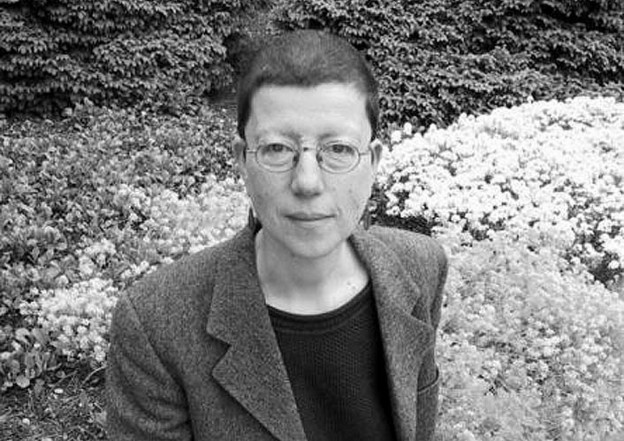Anne Blonstein: From 'worked on screen' (some notarikon poems with a note on notarikon)

[Anne Blonstein died much too soon on April 19, 2011. She had by then created a remarkable series of works in which she employed & transformed traditional numerological and hermeneutic procedures (gematria, notarikon) in the composition of radically new experimental & multilingual poems. Too little known, her oeuvre, as I would read it, is in a line that goes from Abulafia to Mallarmé & Mac Low & various poets of Oulipo and Fluxus, among others, while the devotion & precision that she shows throughout are clearly & powerfully her own. The following, published several months before her death in the blogger version of Poems and Poetics, is available also at http://www.saltpublishing.com/saltmagazine/issues/02/text/Blonstein_Anne.htm, along with five more of her poems; & an essay by Charles Lock on her life & work was posted in Poems and Poetics on May 15, 2011. The complete worked on screen was published as a book by Poetry Salzburg in 2005. (J.R.)]
1.
Jewess undresses
noun garments
fall
round an uncircumscribed parenthesis
the room assumes exile
...until mouths
— eyestormed nightboats —
drop
clamour
2.
Dance
eyes
referrance
Keeping ontological masks
if
kaleidoscoping epistemological rhythms
3.
Pandora encounters ruth
seeding enchancements
under stones.
(Danced exilically rosed
Words infiltrate the zonedself
her and this
unlessened each becoming
each recombines
dreams ash sentences
Limited expressions incorporate
damage
gifted exspellent soritude
i exones
gene terminations.)
4.
Water excels in bonding
until.
Thirst intimately excells responsability
5.
Kissing odontological margins
i've
keeps epidermally resonating
6.
Destruction
ruins
or how ends never delete
earth's semiosis
Her
aspirates
unopened palatial
torns
7.
Democrat anarchist situationist
Keyworker or notepadder
zeitmassed experiments
redeme
tradition
dancer
eat
rest
Pariahs and refugees
tune ectopolitical instruments
echodislocate
now
(Lead is both
exhausted radioactivity
and lettoral insulator
softly mysnomering)
53.
Sun-eyed
noncooperatively educated
contemplative
I should know
I knew
I was playing with fire
I ran the risk
I would still do the same
I wanted to avoid violence
I want to avoid violence
I had either to submit
I do not ask for mercy
I am here
outbreaker
(Before a line drawn
greyciously
rent
exigent indigent shantied)
65.
& sentimental & longing
& skin & loneliness
& stinking & lyrical
& streets & liberty
& solitary & largely
& specifically & literally
& story & lost
& spirits & labours
& struggle & luck
& silent & laughing
& sometimes & lucid
& survival & love
& suffering & lament
& states & locates
& situation & leaving
& schemes & lust
& stillness & lessons
& stranger & listeners
On notarikon and "worked on screen"
Like gematria originally a rabbinical hermeneutical method employed to interpret the Hebrew scriptures, notarikon offers an intimate procedure for writing poetry that draws on existing texts. There are several categories of notarikon. The form that I apply might be regarded as the unfolding of acronyms. Each letter of a word is perceived as the initial letter of another word, such that the original word, letter by letter, fans out into a phrase. A four-letter name gives a four-word phrase : And notarikon never ends …
In some of my sequences, notarikon provides just a part of the poetic structure, in others it dominates.
All my notarikon-based projects since I began writing them about a decade ago have used source texts in languages other than English. While for my most recent sequences I have worked with texts in French, Spanish and Hebrew, my first two sequences drew on (and in) German. The source texts for "correspondence with nobody," written in 2001, were Paul Celan's translations of 21 sonnets by Shakespeare. I wrote "worked on screen" the following year.
The impetus for these poems was an exhibition held at the Basel Kunstmuseum, "Paul Klee — Works on Paper." There is one poem for each of the 108 pictures in the exhibition, which showed drawings and prints (and the occasional painting) from nearly every year from 1903 to that of the artist's death in 1940. Klee's titles (often themselves micropoems) for each picture provided the letters for the notarikon. To begin with, as in the poems 1–7 here, I used the notarikon quite stringently, but as the sequence progressed, I experimented with a variety of ways of composing the poems with and around the basic notarikon method.
The poems are ekphrastic to varying degrees, and their spatialization occasionally echoes features of the Klee pictures, though in most poems it is independent. Because social and political contexts — Klee's and mine — are thematic threads etched through the sequence, in my book I give the date for each artwork (and of the poem's composition). Poem 53 refers to a quite well-known picture (easily viewed online) painted in 1922. The year of the so-called "Great Trial" of Ghandi, as well as the first publication of a rather famous poem …
Poems and poetics